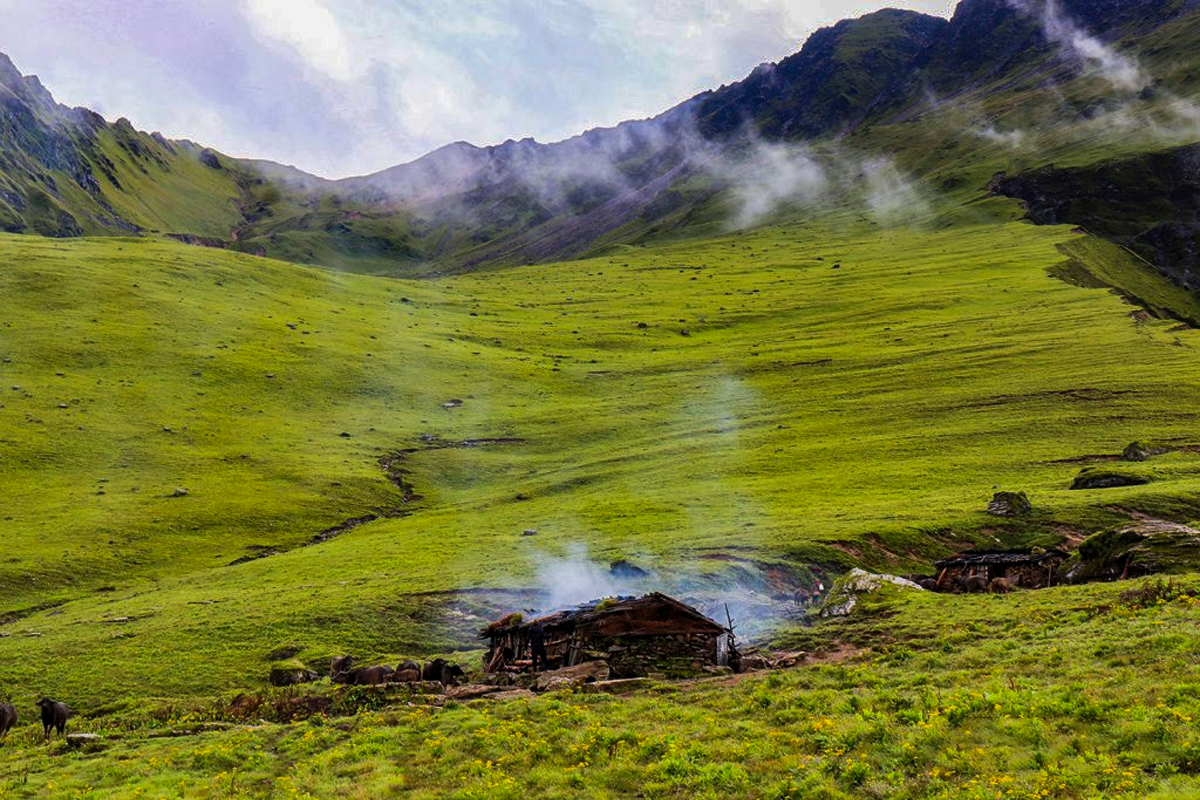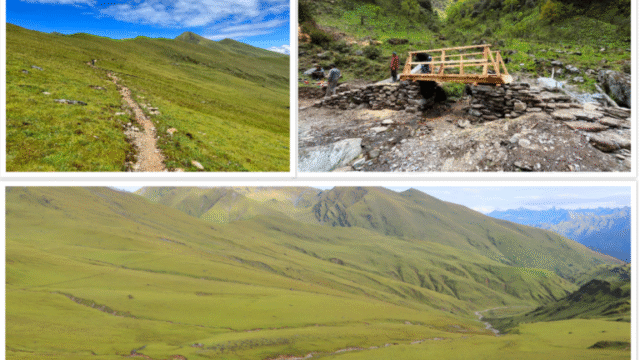Dhorpatan Hunting Reserve, Nepal’s only hunting reserve, is located in the districts of Eastern Rukum, Baglung, and Myagdi. Spanning an area of 1,325 square kilometers, about 60% of the reserve lies in Eastern Rukum, 26% in Baglung, and 14% in Myagdi. Established in 1987 (2044 B.S.), Dhorpatan is not only a hunting destination but also a hub for biodiversity, culture, tourism, and religion.
Every spring and autumn, affluent hunters from around the world visit Dhorpatan to experience the thrill of hunting. The government auctions hunting permits to companies that bring these tourists, collecting significant revenue in the process. The reserve is home to 32 species of mammals and 137 bird species, with hunting organized in designated blocks such as Sundaha, Senge, Dogadi, Barse, Fagune, and Ghustung. In fiscal year 2080/81, the hunting of 19 blue sheep (Naur) and 11 Himalayan tahr generated a revenue of NPR 42.6 million. Since 2010 (2067/68 B.S.), a total of 394 Naur, tahr, and wild boars have been hunted in the reserve. In 2022, a survey revealed that there were 1,290 Naur in 79 different herds.
According to hunting guide Man Bahadur Pun, hunters from countries like Spain, the USA, Russia, Germany, France, and Belarus regularly visit Dhorpatan. He notes that wealthy individuals, sometimes spending millions, come to fulfill their desire to hunt wild animals. Tourists range from young enthusiasts to older hunters, some as old as 74 years.
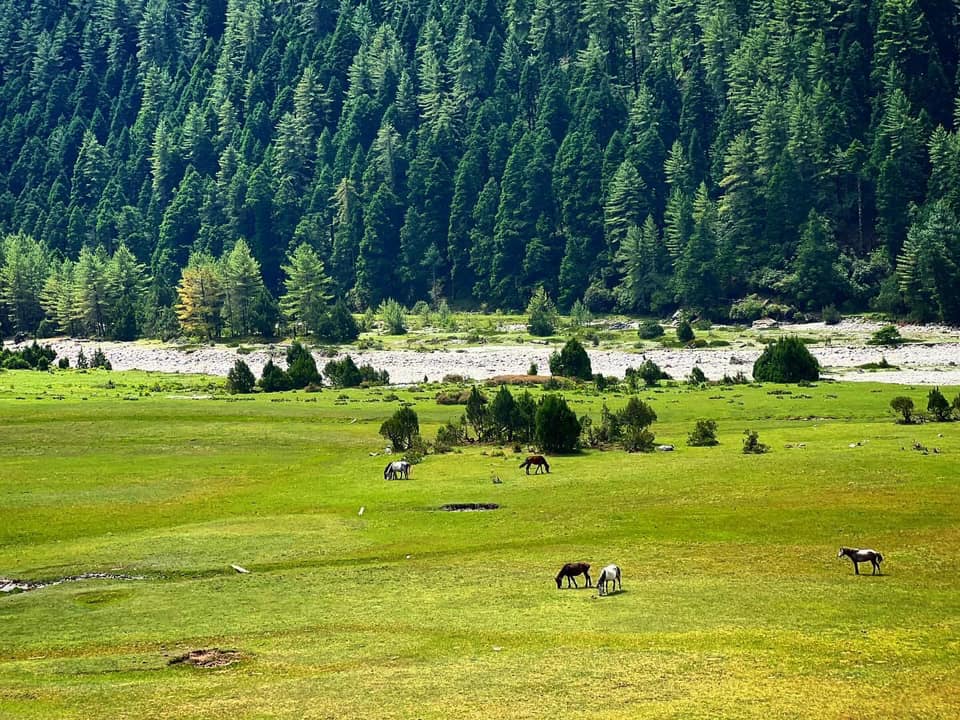
In recent years, domestic tourism in Dhorpatan has increased significantly, with over 15,000 visitors recorded in fiscal year 2080/81. This influx generated NPR 1.9 million in revenue from tourism-related activities. Nepali citizens are charged NPR 100 per entry, tourists from SAARC countries NPR 1,500, and visitors from other nations NPR 3,000.
Sagar Subedi, a ranger at the reserve, said that revenue collection in the last fiscal year amounted to NPR 47.1 million, an increase from the previous year’s NPR 34.8 million. The reserve’s appeal has grown due to the ease of travel and the availability of amenities like hotels and homestays, where up to 300 tourists can stay overnight. According to Ram Bahadur Gharti Magar, operator of Dhorpatan Community Homestay, tourists often visit to capture the blooming “Bukiphul” flowers and share photos and videos on social media.
In addition to hunting, Dhorpatan offers several other attractions. The beautiful meadows, traditional villages, captivating mountains, and unique lifestyle make it a scenic wonder. The reserve houses a visitor center providing information about the area’s wildlife, with a museum displaying skins of various animals and birds. Religious sites like the Dhorbarah Temple, Rudratal, and Chentung Monastery draw both tourists and pilgrims, especially during festivals like Janai Purnima and Shivaratri.
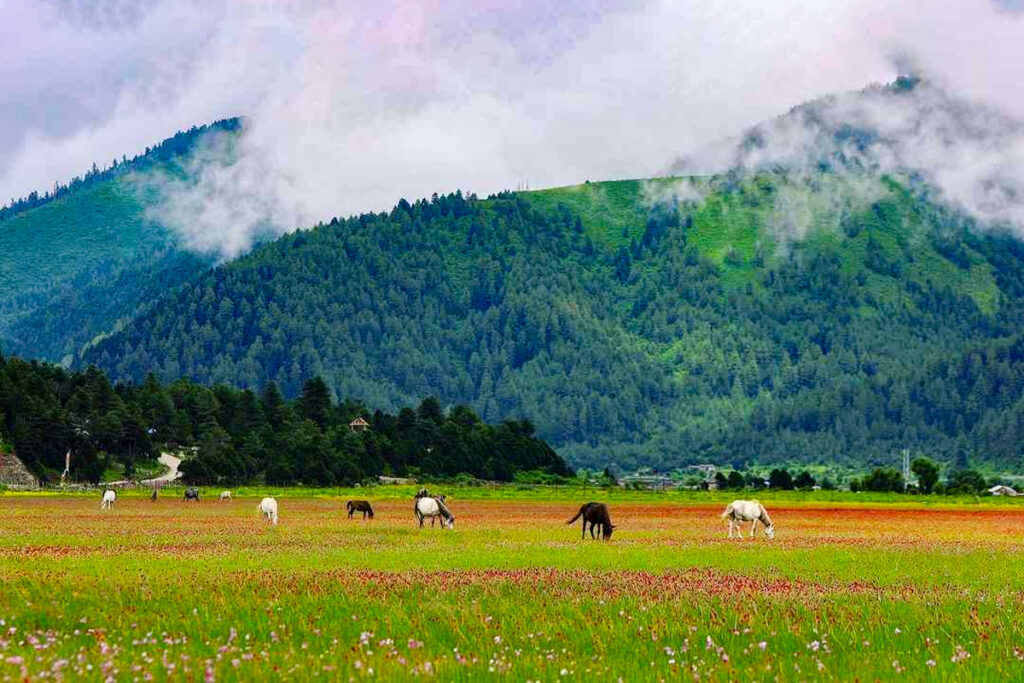
The Tibetan settlement and Chentung Monastery, located three kilometers east of the reserve office, offer insights into the culture and lifestyle of Tibetan refugees. From Jaljala, 22 kilometers away from Dhorpatan, visitors can enjoy breathtaking views of the Himalayas and surrounding landscapes.
During the monsoon, Dhorpatan’s meadows, referred to locally as “Bukis,” come alive with a variety of wildflowers known as Bukiphul. These flowers hold cultural significance, as they are collected and offered during local festivals such as Bhume Puja and Saune Sankranti. The fields of Bukiphul, covering the area from July to October, are often compared to heaven during the Janai Purnima festival.
The vibrant flowers and the tradition of livestock grazing in these areas create an enchanting atmosphere. Farmers like Laxman Thapa highlight how livestock that feed on the nutrient-rich grasses of Bukiphul become healthier, contributing to better milk and meat production. To preserve these flowers, the reserve has restricted the collection of manure by tractors in grazing areas. Conservation efforts are underway to document and identify the various species of flowers found in Dhorpatan.
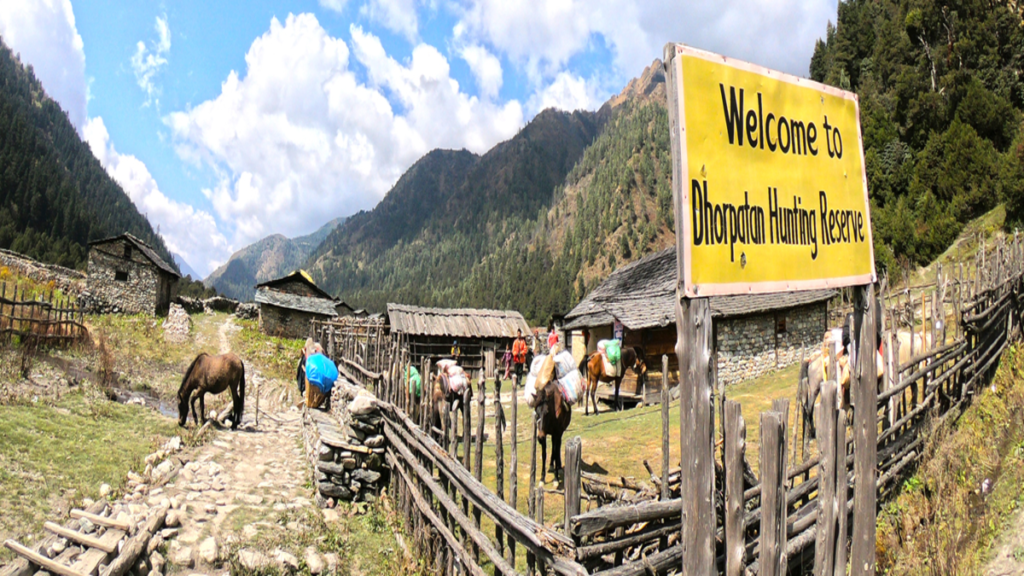
Dhorpatan is accessible via several routes. From Pokhara, travelers can reach Burtibang in Baglung through the Mid-Hills Highway, taking approximately five hours by bus, car, or motorcycle. From there, a 36-kilometer dirt road leads to Dhorpatan, a journey of two to three hours by jeep or motorcycle. Another route passes through Myagdi’s Beni, Dhawalagiri Rural Municipality, and Jaljala, requiring a two-day trek. The reserve is also reachable from Eastern Rukum’s Taksera, and it connects to Dolpa via the Guerrilla Trek route.
Efforts to further develop Dhorpatan’s tourism potential are ongoing, with infrastructure projects planned to improve access and facilities. Local authorities are pushing for the completion of roads connecting Dhorpatan with Baglung and Myagdi, which will significantly shorten the travel time and enhance the tourism experience.
Dhorpatan Hunting Reserve remains a unique destination in Nepal, combining adventure tourism, cultural experiences, and natural beauty. Whether hunting, trekking or simply enjoying the mesmerizing landscapes, Dhorpatan offers an unforgettable experience for both domestic and international tourists.
Source: RSS
